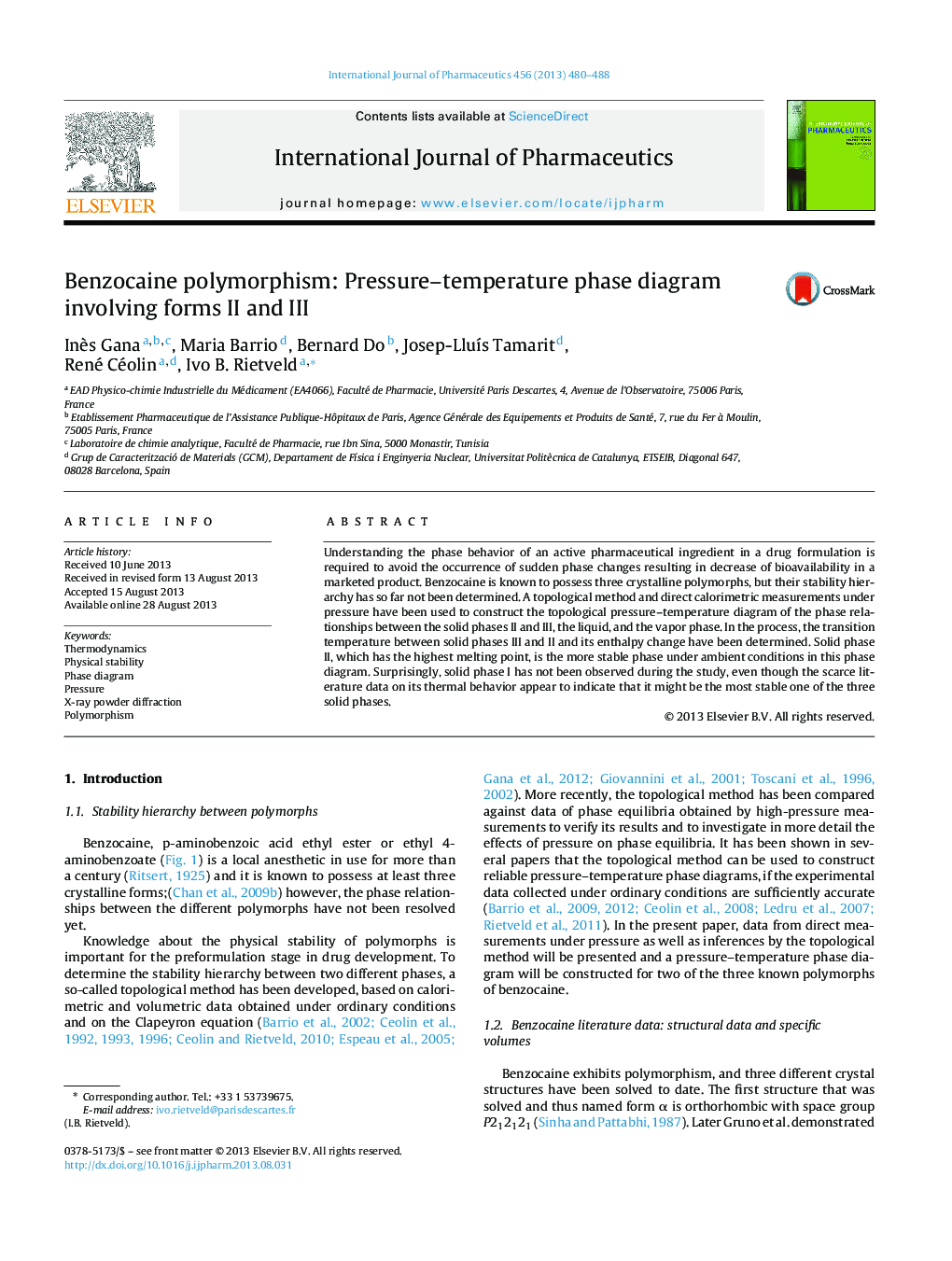| Article ID | Journal | Published Year | Pages | File Type |
|---|---|---|---|---|
| 2502145 | International Journal of Pharmaceutics | 2013 | 9 Pages |
Understanding the phase behavior of an active pharmaceutical ingredient in a drug formulation is required to avoid the occurrence of sudden phase changes resulting in decrease of bioavailability in a marketed product. Benzocaine is known to possess three crystalline polymorphs, but their stability hierarchy has so far not been determined. A topological method and direct calorimetric measurements under pressure have been used to construct the topological pressure–temperature diagram of the phase relationships between the solid phases II and III, the liquid, and the vapor phase. In the process, the transition temperature between solid phases III and II and its enthalpy change have been determined. Solid phase II, which has the highest melting point, is the more stable phase under ambient conditions in this phase diagram. Surprisingly, solid phase I has not been observed during the study, even though the scarce literature data on its thermal behavior appear to indicate that it might be the most stable one of the three solid phases.
Graphical abstractFigure optionsDownload full-size imageDownload high-quality image (143 K)Download as PowerPoint slide
